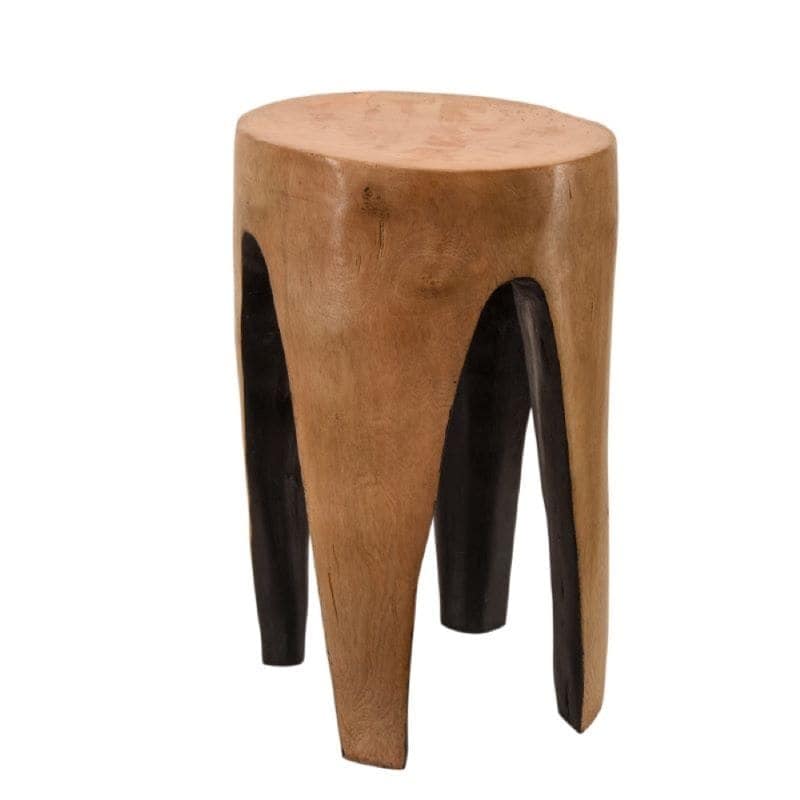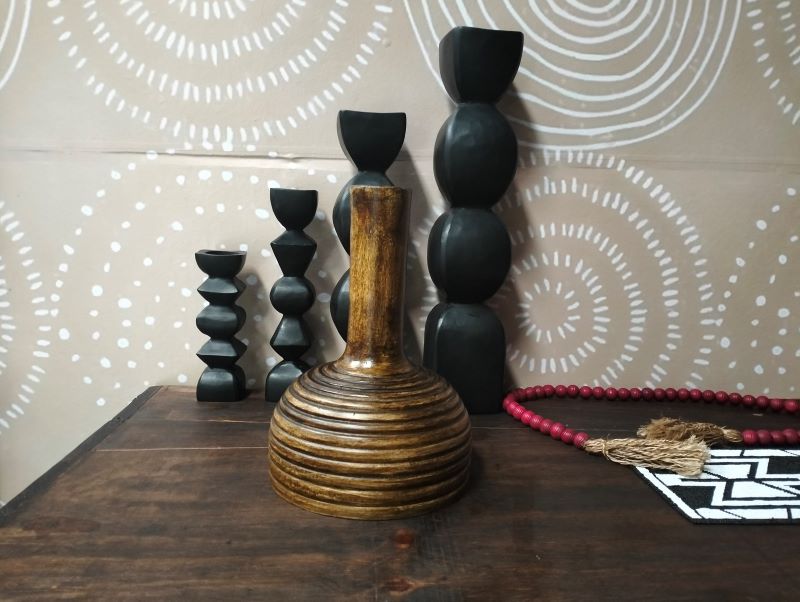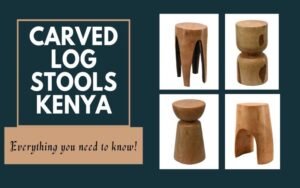Want to know the best wood for log stool carvings? This article has all the details you need to know.
The carved log stool is an iconic piece of Africa’s material culture and heritage. From royal stools of the Yoruba and Ashanti to the handcrafted log stools of the Luo in Kenya, these log stools carry centuries of tradition — and today, they continue to enhance modern spaces with their natural appeal.
But while we craft beautiful log stool designs, sustainability is now the biggest challenge facing this ancient craft. So, what’s the best wood for log stools in Kenya, and how do we preserve this timeless art form responsibly?
A brief history of African carved log stools

Carving a log stool takes patience and skill, honed over many years and achieved using simple hand tools like chisels and knives.
In African cultures, carved stools have long symbolized power and status. In Yoruba tradition, kings, queens, and high priests used log stools to signify their rank. An Ashanti king couldn’t wield authority without his sacred stool in Ghana. Closer to home, the Luo community in Kenya cultivates trees specifically for crafting log stools — a process that can take a year from planting to carving and decorating.
These original carved stools hold deep cultural meaning and are reserved for respected members of the community. Today, many modern log stools draw inspiration from these cultural designs, blending African tradition with contemporary home décor styles.
Best wood for log stool carving in Kenya: What to use and why
The art of carving log stools in Kenya is rooted in using natural, sustainable materials. Traditionally, indigenous hardwoods like Mpingo (Ebony), Mutamayu (Olive), Muhuhu (East African Camphor), and Mgurure (Leadwood) were favored for their durability and beautiful grain.
However, over-exploitation has made many indigenous carving species scarce. To keep the craft alive without harming our forests, the Kenya Forestry Research Institute (KEFRI) recommends a list of ‘good woods’ for sustainable carving. These fall into three categories:
✅ Major woods: Traditionally popular and widely used — Mpingo (Ebony), Mutamayu (Olive), Muhuhu, and Mgurure.
✅ Minor woods: Used when major species are unavailable.
✅ Alternative woods: Fast-growing, more sustainable species with good carving potential.
The best wood for log stools in Kenya today is Jacaranda.
Jacaranda is widely available, grows fast, and is easy to work with. Its straight grain, light color, low odor, and smooth carving qualities make it an ideal eco-friendly choice. Other sustainable options include Mwarubaini (Neem) and Mwembe (Mango) wood.
At Lucidity Artisanals Shop, we hand-carve our log stools primarily from Jacaranda to ensure sustainability, affordability, and beautiful, long-lasting pieces.
How we make our Kenyan log stools
Our mission is to repurpose waste wood into stunning carved log stools. However, not every wood is suitable — some are too hard, too brittle, or prone to splitting.
By relying on skilled artisans, we’ve learned to choose only the best wood for carving log stools. By using recommended species like Jacaranda, we help protect endangered indigenous trees while creating beautiful, functional art for your home.
Frequently asked questions about log stools in Kenya
1. What is a carved item?
A carved item is any object shaped by hand or with simple tools, like chisels and knives. From log stools and side tables to fruit bowls and wall art, carving transforms raw material into something both functional and decorative.
2. What wood is used for a carved log stool or accent table?
A carved log stool or wooden accent table in Kenya is typically made from Jacaranda or other recommended sustainable woods. Jacaranda’s pale color, straight grain, and ease of carving (especially when freshly cut) make it a favorite the best wood for log stool carving.
3. How do I know if a piece is hand-carved?
True hand-carved furniture shows slight imperfections — no two pieces are exactly alike. Look for subtle variations in straight lines, edges, or patterns, as well as tool marks that reveal the artisan’s touch.
Bring a piece of Kenyan craft into your space
When you choose our carved log stools, you’re getting more than a seat — you’re bringing home a piece of Kenyan heritage while supporting sustainable craftsmanship. Our stools come in unique designs, each adding a natural, earthy vibe to any room.
Ready to order your own hand-carved log stool?
🛒 Order online: www.lucidityartisanals.shop
📞 Call or WhatsApp: +254 721 668660
📧 Email: [email protected]
📍 Visit us: 84 Murishu Road, Nairobi — open daily, 9 am to 4 pm.


